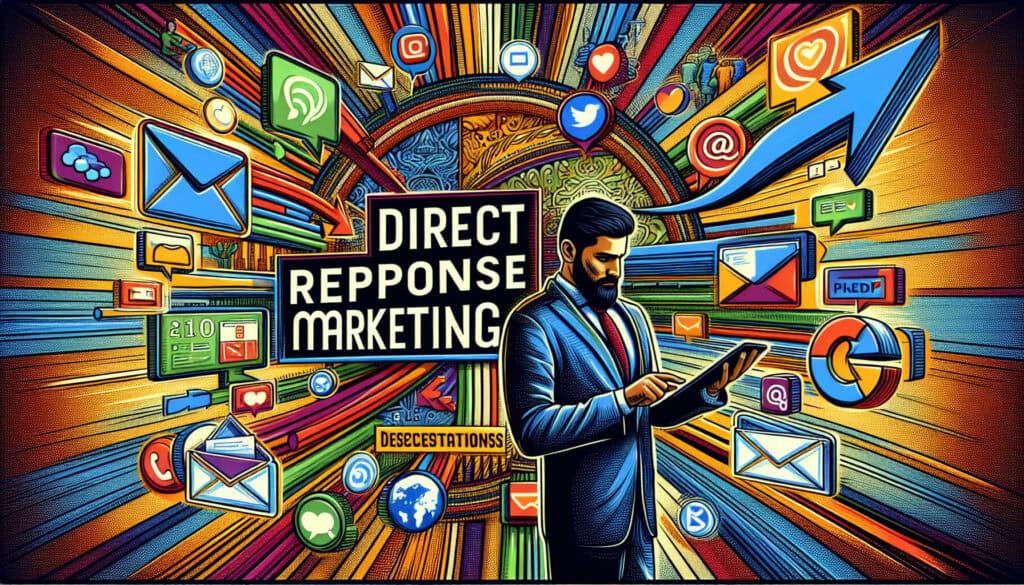A type of marketing designed to elicit an instant response by encouraging prospects to take a specific action.
- Methodologies: Lean Sigma, Manufacturing
Direct Response Marketing

Direct Response Marketing
- A/B testing, Agile Methodology, Conversion Rate, Customer Experience, Digital Marketing, Marketing Strategy, Value Proposition
Objective:
How it’s used:
- This strategy uses compelling calls-to-action (CTAs) like 'Call now,' 'Click here,' or 'Order today.' Its success is measured by the number of responses (e.g., clicks, calls, or sales) it generates.
Pros
- The results are highly measurable, making it easy to calculate ROI; can generate sales and leads quickly; is very data-driven.
Cons
- Can be perceived as aggressive or 'salesy'; often focuses on short-term conversions rather than long-term brand building.
Categories:
- Customers & Marketing
Best for:
- Prompting an immediate, measurable action from a potential customer through a targeted advertisement.
Direct Response Marketing finds extensive application in industries such as e-commerce, financial services, and technology where immediate consumer interaction is paramount. Campaigns integrating this strategy are typically employed during product launches or promotional periods, with marketing teams spearheading initiatives crafted around specific demographics. Tools like email marketing, social media ads, and telemarketing often feature urgent CTAs that encourage direct consumer engagement. Participation from cross-functional teams—including sales, marketing, and customer service—is essential for creating cohesive messaging that resonates with target audiences. This methodology is particularly beneficial in lead generation strategies where metrics are closely monitored; sales teams can effectively track responses through various analytics tools, enabling them to make data-driven decisions quickly. For example, a tech company launching a new software might run a series of pay-per-click ads with strong CTAs that push viewers to download a demo, and the success of this campaign can be measured by download rates and follow-up calls. By aligning sales and marketing efforts, organizations can achieve a higher conversion rate, transforming inquiry into sales efficiently.
Key steps of this methodology
- Define clear objectives and specific CTAs.
- Develop targeted messaging that resonates with the audience.
- Select appropriate channels for ad placement.
- Create compelling ad creatives that enhance the offer.
- Implement A/B testing for different variations of ads.
- Launch the marketing campaign across chosen channels.
- Monitor responses in real-time to gauge performance.
- Optimize campaigns based on real-time feedback and metrics.
- Scale successful campaigns for wider reach and impact.
- Utilize retargeting strategies to engage previous responders.
Pro Tips
- Utilize A/B testing extensively to refine CTAs based on real-time data, optimizing for language, placement, and design.
- Segment your audience meticulously to tailor messaging that resonates with various demographics, increasing response likelihood.
- Incorporate urgency into CTAs by leveraging time-sensitive offers, compelling potential customers to act swiftly.
To read and compare several methodologies, we recommend the
> Extensive Methodologies Repository <
together with the 400+ other methodologies.
Your comments on this methodology or additional info are welcome on the comment section below ↓ , so as any engineering-related ideas or links.
Historical Context
1960
1980
1983
1990
1995
2000
2010
1950
1980
1980
1986
1994
1995
2000
(if date is unknown or not relevant, e.g. "fluid mechanics", a rounded estimation of its notable emergence is provided)














Related Posts
Master Production Schedule (MPS)
Mass Customization
Marketing Funnel
Marketing Audit
MAPO Index (Movement and Assistance of Hospital Patients)
Manufacturing Resource Planning (MRP II)